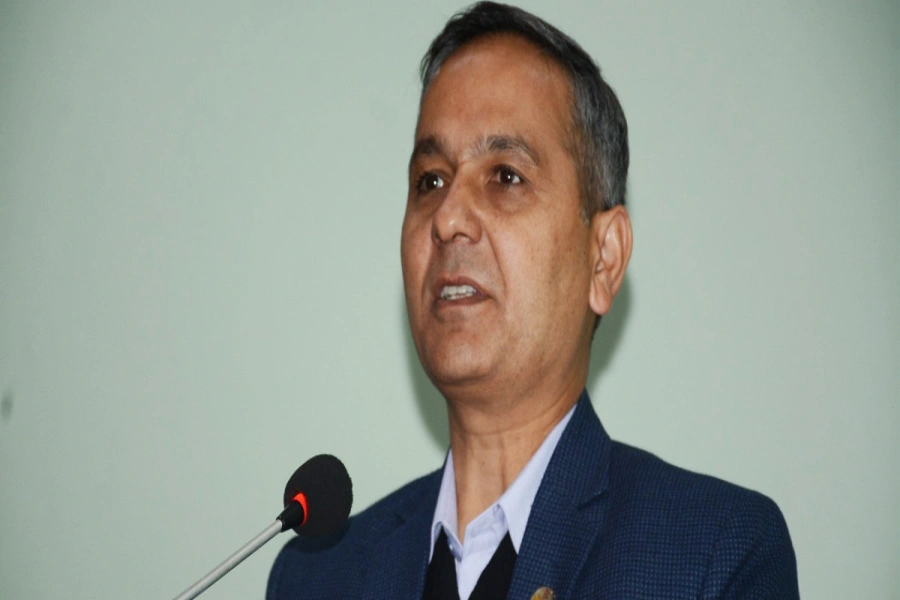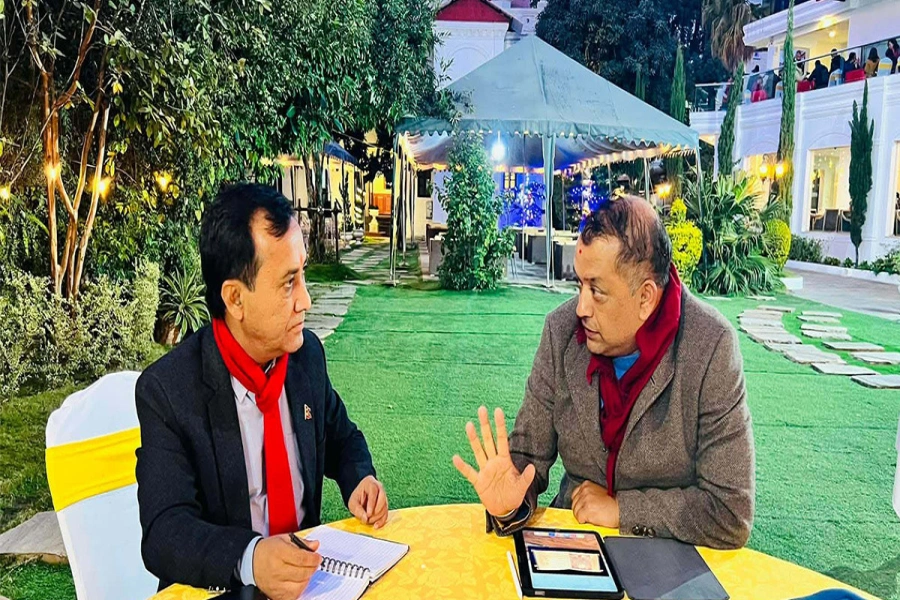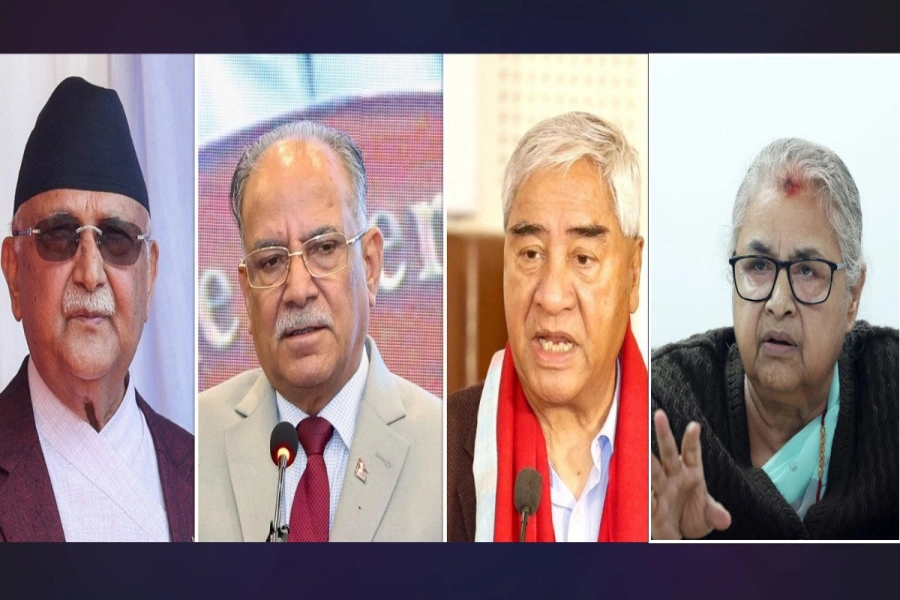China, which shares borders with the most number of countries in the world (14), ranging from small Bhutan to giant Russia, has an important role in the geostrategic balance of the region and by extension, the whole world. It shares borders with five South Asian countries (India, Pakistan, Afghanistan, Nepal and Bhutan), making it an integral part of South Asia. Having being given the observer status in SAARC, China has the responsibility to share its challenges as well as possibilities with SAARC countries, and vice versa. The length of border China shares with South Asia (approximately 5,700 km) is in fact greater than its border length with Russia (approximately 3,605 km). This means cooperative and competitive intervention in this region has the potential to strategically change the dynamics of China’s global relationships. After all, peace and development are twin legs on which the independence, sovereignty and territorial integrity of any country stand.
Nepal-China ties date back to as early as 406 AD when Chinese monk Fa Xian visited Nepal. Similarly, Nepali craftsman Arniko came to China during the reign of the Yuan dynasty to build pagodas. In modern times, after the establishment of diplomatic relation between China and Nepal in August 1955, there have been regular visits by prominent leaders both ways. Declaration of 2012 as the “Nepal China Year of Friendly Exchanges” has further boosted Nepal-China relationship as the two counties established a Nepal-China Comprehensive Partnership of Cooperation, on the basis of the Five Principles of Peaceful Co-existence. [break]
China is now increasingly looking to Nepal as a trade gateway to India. It has shown keen interest for infrastructure development in Nepal, particularly in the areas with the potential of linking China with Nepal. The rapid increase of Chinese tourists and the growing number of institutions teaching Chinese language in Nepal bear testimony to growing people to people relations. China is also taking keen interest in infrastructures linking China, Nepal and India. China is one of the largest donors in Nepal and there seem to be concerted effort to increase people to people relation between the two countries. This is important as there is still a sizable language, cultural and social barrier between the two countries.
China, Nepal and India
Nepal shares 1,880-km border with India and 1,414-km border with China. In fact, of all the countries in the region, Nepal shares the longest border with these two countries. Nepal thus has the potential to be the longest economic bridge between the two economically ascendant countries. But for this there has to be stability in Nepal. Similarly, Nepal has to institutionalize the gains of the People’s Movement, People’s War and Madhesi Movement, namely a republic based on secularism and federalism based on liberation form ethnic and regional oppression. It is worth noting that Nepal has recently successfully concluded the Peace Process under former Prime Minister Dr Baburam Bhattarai. The Maoist army has been integrated into national army and the government is going to establish Truth and Reconciliation and Disappearance Commission to address the remaining issues of the Peace Process. This is an important milestone for peace and development. The next important agenda is drafting an inclusive constitution through Constituent Assembly. It is in this context that the recent visit of Comrade Prachanda to both China and India needs to be evaluated. He has rightly focused on peace, development and Constituent Assembly election, which have ramifications on the stability of both the countries as well as the region.
Nepal was at the crossroads for ancient scholars from both India and China, particularly in relation to the spread of Buddhism. Historically, it has been an absorber of religious and cultural influences from both north and south. Now it is tourism, with particular focus on Lumbini, the birthplace of Gautam Buddha, which can help the country forge stronger links with its two big neighbors. Interestingly, Nepal today is playing host to record tourist numbers from both India and China.
China, India, South Asia When one talks of China-South Asian ties, one has to talk of India, China’s gateway to South Asia. Both China and India boast of rich ancient civilization and have helped shape the indigenous culture of the region. Nepal would like to see China and India as natural strategic partners. Today, China, as second largest economy in the world with India not far behind at fourth, are competing to put this region on the world stage. With the exhaustion of natural resources in the Americans and Europe, it is natural for the world to look at India and China as potential destinations for raw material.
It won’t be an exaggeration to say that a stable security situation for China and India will translate into security for all the countries in this region. Also, this region consists of the most dynamics countries in the world as well as some of the development laggards; hence economic dividends need to be shared proportionally for regional stability. Physical connectivity and cooperation in infrastructure development have lagged between China and the South Asian region, relative to such cooperation between China and ASEAN, or between India and ASEAN or the Southeast Asian region for that matter. Hence China and India need to forge greater cooperation in infrastructure vis-à-vis other countries in South Asia. Acceleration of the construction of the Asian Highway connecting China, Nepal and India will boost the whole region.
People to people contact
In today’s world where modern tools like mobile, internet and Skype are revolutionizing communication, where does people’s to people’s contacts stand? In my view, machine-based communication can never replace, but only compliment, people to people contact. In relation to promoting friendship and mutual trust among nations, people to people contacts work to generation mutual affection and empathy, something which is not possible through electronic gadgets. The most vital wealth of a nation is its people. This type of communication is specially needed amongst China-South Asian countries, where at one end there is a One Party system of governance (in China), while in others the mode of governance is multiparty system. Each has a lot to learn from the other.
As hostile activities of Cold War era are increasingly replaced by growing engagement, the art of communication and conflict management is increasingly important. People to people communication is important in transforming combative and confrontational ties into competitive and cooperative activities.
Combative and confrontational relation between China and India will adversely affect not only Nepal, but the whole region, and possibly the whole world. Competitive and the cooperative relation between the two countries will, on the other hand, not only boost Nepal’s economy, but also has the potential to lift the whole region. It is in this context that Chairman Comrade Prachanda has emphasized the importance of trilateral relationship between China, Nepal and India as a way to bring stability in this region, and to strengthen bilateral relations between Nepal and India, and Nepal and China. Because, once again, security of China and India equates to the security of all the countries in the region. Hence people to people contact between all the countries in this region in general, and between China and India in particular, need to be enhanced for greater regional stability. Nepal being strategically placed between the two countries can facilitate this process in small but meaningful ways.
Conclusion
The leaders of China and South Asia in general and China and India in particular should understand the limitations and opportunities this region offers. History has given one more chance to develop this region as a cradle of civilization. Let this century be the century of Asia! For this we need more and more think-tanks and not war-tanks in this region!
The author is UCPN (Maoist) Central Committee member
Excerpts from the author’s June 6 speech at the China-South Asian Countries Think-Tank Forum in Kunming, Chin
In Argentina, pandemic exacts a heavy toll on tango culture








































